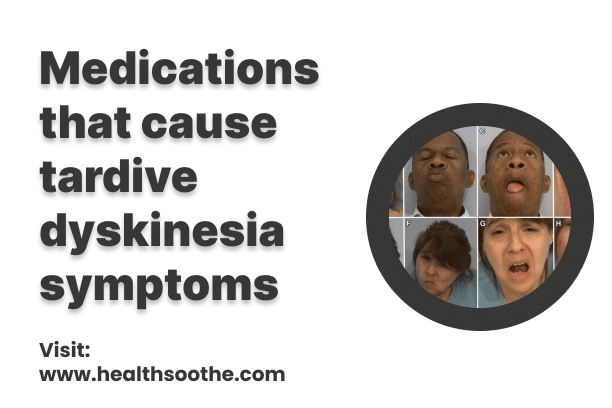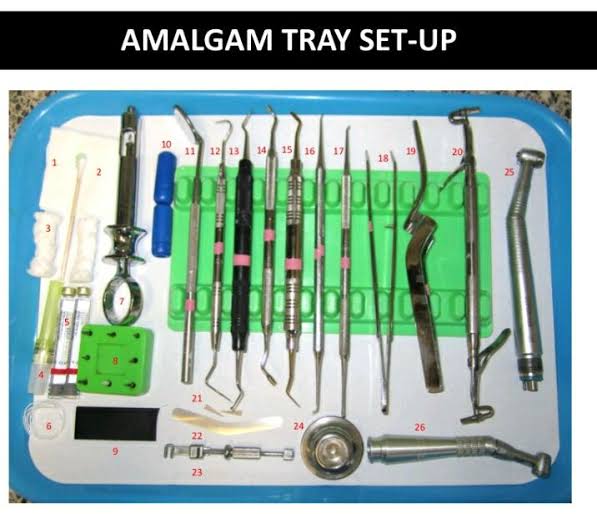Tardive dyskinesia (TD) is a condition characterized by involuntary and repetitive movements, typically affecting the face, trunk, and other body parts.
TD often stems from the use of medications known as dopamine receptor blockers, such as antipsychotics and various prescription drugs. Studies suggest that a significant portion, ranging from 20% to 50%, of individuals taking antipsychotics may encounter TD, with women and older adults being particularly vulnerable.
Prolonged use of dopamine receptor blockers can lead to alterations in the striatum, a region of the brain, which may contribute to the development of TD. However, it's essential to understand that not everyone prescribed dopamine-blocking medications will develop TD.
Recognizing the medications commonly associated with TD can prompt discussions with healthcare providers about potential treatment options for TD.
Antipsychotics
Antipsychotics are medications primarily prescribed to manage psychosis associated with mental health disorders like schizophrenia. They might also be employed off-label for various other conditions. These drugs alleviate symptoms of psychosis by blocking dopamine receptors.
Presently, it remains unclear whether specific antipsychotic medications pose a higher risk for tardive dyskinesia (TD) compared to others. Instead, evidence suggests that the duration of treatment rather than the particular type of medication administered increases the likelihood of TD development.
Moreover, there's an elevated risk of TD associated with the use of first-line ("typical") antipsychotic medications. Below are some of the most frequently prescribed typical antipsychotics:
Chlorpromazine
Chlorpromazine, a first-generation antipsychotic, is utilized to mitigate symptoms linked to schizophrenia, bipolar I disorder, and acute psychosis.
Despite being classified as a "low-potency" antipsychotic, chlorpromazine is linked to tardive dyskinesia (TD), particularly when administered over extended durations. Its slow elimination from the body, attributable to its capacity to accumulate in body fat, contributes to this association.
Fluphenazine
Fluphenazine, an older antipsychotic, is primarily employed as a maintenance therapy for schizophrenia treatment. It's notable that this medication might exacerbate movement disorders, a factor that could elucidate its association with tardive dyskinesia (TD).
Haloperidol
Haloperidol is frequently prescribed as a first-line treatment to alleviate positive symptoms of schizophrenia, such as hallucinations and delusions. Additionally, it finds utility in treating Tourette syndrome, pediatric hyperactivity, and specific pediatric behavioral disorders.
Similar to other first-line antipsychotics, long-term use of haloperidol may lead to the development of tardive dyskinesia (TD), which can manifest after several years of treatment. Notably, acute dystonia, characterized by sudden muscle spasms or contractions, may emerge within hours or days following initiation of haloperidol therapy.
Read Also: Ideas on How to Help a Drug Addict in Quitting Drugs
What Are Symptoms of Tardive Dyskinesia?
Tardive dyskinesias represent a distinct symptom characterized by extrapyramidal movements, which encompass automatic and fixed postural movements not readily observable. Extrapyramidal symptoms encompass various movement disorders including:
- Restlessness or an inability to remain seated (akathisia)
- Involuntary and erratic body movements spanning from minor fidgeting to difficulties with speech, swallowing, and maintaining posture (chorea)
- Involuntary muscle contractions resulting in abnormal postures (dystonia)
- Unintentional muscle twitching or jerking (myoclonus)
- Repetitive movements, gestures, or the repetition of words (stereotypy)
- Sudden, repeated twitches, movements, or vocalizations (tics)
- Shaking movements (tremors)
Pros and Cons of tardive dyskinesia
Pros:
- Early Detection
- Monitoring
- Research Focus
Cons:
- Movement Impairment
- Stigma
- Treatment Challenges
Differences Between tardive dyskinesia and Levothyroxine
Tardive Dyskinesia:
Management of tardive dyskinesia involves discontinuation or reduction of the offending medication if possible, switching to alternative medications with lower risk, or using medications such as clonazepam, valbenazine, or deutetrabenazine to alleviate symptoms.
Levothyroxine:
Levothyroxine is taken orally and is usually prescribed as a lifelong treatment for hypothyroidism. Dosage is adjusted based on thyroid function tests and individual response to therapy.
Alternative to tardive dyskinesia
Botulinum Toxin (Botox) Injections:
Injections of botulinum toxin into affected muscles can help reduce the severity of tardive dyskinesia symptoms, particularly in cases where specific muscle groups are involved.
What Causes Tardive Dyskinesia?
The primary cause of tardive dyskinesia is the prolonged use of dopaminergic antagonist medications, particularly antipsychotic medications.
Medications known to induce tardive dyskinesia include:
Antipsychotic drugs (neuroleptics):
- Butyrophenones: droperidol (Inapsine), haloperidol (Haldol), dibenzodiazepines [such as clozapine (Clozaril)], loxapine (Loxitane)
- Diphenylbutylpiperidines: pimozide (Orap)
- Indolones: molindone (Moban)
- Phenothiazines: chlorpromazine (Thorazine), fluphenazine (Prolixin), mesoridazine (Serentil), perphenazine, thioridazine, trifluoperazine (Stelazine)
- Thioxanthenes: thiothixene (Navane)
- Newer atypical antipsychotic agents (occasionally associated with tardive dyskinesias):
- Olanzapine (Zyprexa)
- Quetiapine (Seroquel)
- Risperidone (Risperdal)
- Paliperidone (Invega)
- Amisulpride (Solian, Socian, Deniban)
Other medications implicated in tardive dyskinesia include:
- Metoclopramide (Reglan), particularly in older individuals
- Antihistamines
- Fluoxetine (Prozac, Sarafem)
- Amoxapine (Asendin)
How Is Tardive Dyskinesia Diagnosed?
Tardive dyskinesia is typically diagnosed through a comprehensive assessment involving the patient's medical history and a physical examination, with particular attention to the use of dopaminergic antagonist medications.
It's crucial to consider and differentiate conditions that may mimic tardive dyskinesia, such as seizure disorders, advanced syphilis, thyroid disease, and Wilson disease.
Diagnostic tests that may be warranted to explore alternative conditions include:
- Laboratory tests like serum ceruloplasmin assessment, urine copper collection, liver function tests including liver transaminases, and evaluation of the copper transporter gene.
- Imaging studies such as computed tomography (CT) scans, magnetic resonance imaging (MRI), positron emission tomography (PET) scans, and single-photon emission computed tomography (SPECT) scans.
- Electroencephalography (EEG) to evaluate brain activity.
- Comprehensive ophthalmologic examination, which may involve slit-lamp assessment.
Additionally, other tests might be necessary, including:
- Thyroid function tests to rule out thyroid dysfunction.
- Blood tests including a chemistry panel, thyroid function tests, and syphilis serology.
- Screening tests for connective tissue diseases.
- Red blood cell (RBC) counts and assessment of serum calcium levels.
What Is the Treatment for Tardive Dyskinesia?
Treatment for tardive dyskinesia often involves a careful reassessment and adjustment of medications (it's crucial not to discontinue any medication without consulting a healthcare professional).
Medications prescribed to alleviate symptoms of tardive dyskinesia may include:
- Clonazepam (Klonopin)
- Ginkgo biloba (inform your doctor before using herbal supplements due to potential interactions with medications)
- Valbenazine (Ingrezza)
- Deutetrabenazine (Austedo)
Some other medications that have shown anecdotal support in reducing tardive dyskinesia symptoms include:
- Vitamin E
- Levodopa
- Benzodiazepines
- Botulinum toxin (Botox)
- Reserpine (Resa Oral, Reserpoid Oral, Sandril Oral, and others)
- Tetrabenazine (Xenazine)
- Propranolol (Inderal)
- Dopamine-depleting agents
- Ondansetron (Zofran)
Additionally, psychotherapy can be beneficial in helping patients cope with the emotional distress associated with tardive dyskinesia symptoms and their impact on daily life.
Conclusion
Understanding the drugs that can potentially induce tardive dyskinesia (TD) is vital for both healthcare providers and patients. Antipsychotic medications like chlorpromazine, fluphenazine, and haloperidol, while essential for managing conditions such as schizophrenia and bipolar disorder, carry the risk of TD, especially with prolonged use. Recognizing the association between these drugs and TD underscores the importance of cautious prescribing practices and vigilant monitoring of patients.
Healthcare professionals must balance the therapeutic benefits of these medications against the potential risks of TD and other adverse effects. Continued research into safer alternatives and improved management strategies remains crucial for enhancing patient care and minimizing the impact of TD on individuals undergoing psychiatric treatment.








